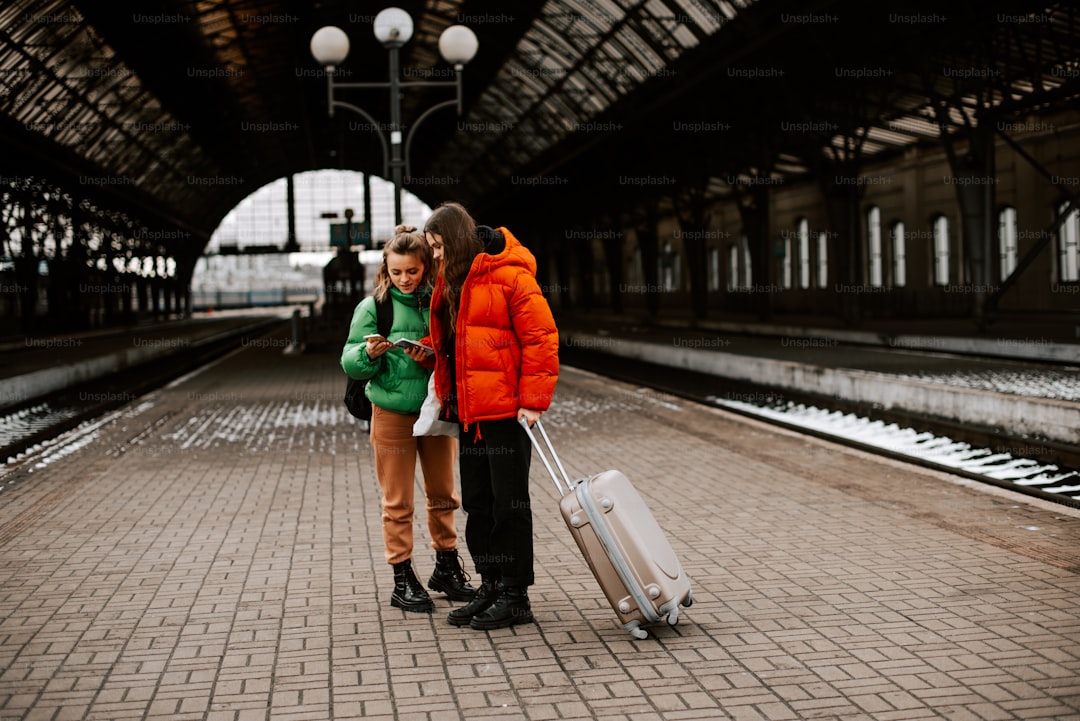Connecting Wanderers and Building a Thriving Online Digital Nomad Community

Introduction
The digital nomad movement has transformed the way people work, travel and build relationships. No longer confined to a single office or city, wanderers now roam the globe while staying connected through the internet. This freedom creates a unique set of challenges – loneliness, information overload, cultural friction and the constant need to find reliable resources. A well‑crafted online community can turn those challenges into opportunities. By linking travelers, sharing knowledge, and fostering genuine connections, an online digital nomad community becomes a living ecosystem where members support each other, grow together and co‑create experiences that go beyond the sum of individual journeys.
Why an Online Community Matters
Shared Experience
Digital nomads share a common lifestyle that blends work, travel and personal growth. When people meet others who understand the rhythm of hopping between time zones, hunting for coworking spaces and balancing client expectations with sunrise hikes, a sense of belonging instantly forms. This shared experience reduces the feeling of isolation that can accompany remote work.
Rapid Knowledge Exchange
Information about visa regulations, reliable Wi‑Fi cafés, affordable housing and local networking events changes quickly. An online platform enables members to post updates in real time, keeping the community current and agile. The speed of knowledge exchange can save members weeks of research and countless dollars.
Collaborative Opportunities
From joint projects and skill swaps to co‑living arrangements, a thriving community creates a marketplace of talent and resources. When a graphic designer meets a SaaS founder looking for branding, a partnership can emerge without the friction of traditional hiring processes.
Emotional Support
Living on the road can be emotionally demanding. Community members often become sounding boards for personal challenges, career doubts and cultural misunderstandings. A supportive environment helps individuals stay resilient and motivated.
Core Pillars of a Thriving Digital Nomad Community
Purpose
A clear purpose acts as a compass. Whether the goal is to empower members to travel sustainably, to accelerate professional growth or to foster deep friendships, the purpose must be articulated and revisited regularly.
Inclusivity
The community should welcome wanderers of all ages, skill levels, nationalities and budget ranges. Inclusive language, accessible resources and diverse representation ensure that everyone feels valued.
Engagement
Passive membership leads to stagnation. Regular prompts, events, challenges and recognition systems keep members actively participating and contributing.
Trust
Safety and privacy are paramount. Clear moderation policies, verified member profiles and transparent governance build trust among participants.
Value
Members stay when they perceive tangible benefits. Curated content, exclusive discounts, mentorship programs and real‑world meet‑ups provide the value that justifies ongoing involvement.
Building the Infrastructure
Choosing the Right Platform
Select a platform that balances flexibility, scalability and user experience. Popular choices include:
- Dedicated community forums built on open‑source software such as Discourse.
- Messaging apps with channel organization like Slack or Discord.
- Social networking groups hosted on Facebook or LinkedIn for broader reach.
Consider the following criteria when evaluating options:
- Ability to create sub‑communities for specific interests (e.g., photography, SaaS, sustainable travel).
- Integration with calendar tools for event management.
- Support for polls, surveys and voting mechanisms.
- Mobile friendliness, since most members will access the community on the go.
Setting Up Governance
A transparent governance structure prevents confusion and conflict. Key components include:
- Community Guidelines – A concise document outlining expected behavior, harassment policies and content standards.
- Moderation Team – Volunteers or paid staff who monitor discussions, enforce guidelines and resolve disputes.
- Leadership Council – A small group of seasoned members elected or appointed to steer strategic decisions, plan events and manage partnerships.
Document these structures in a publicly accessible “About” section so newcomers understand how the community operates.
Designing the User Journey
From the moment a wanderer lands on the landing page to the point they become an active contributor, the journey should be smooth:
- Welcome Flow – A brief introduction video or infographic that explains the community’s purpose and how to get started.
- Onboarding Survey – Simple questions about the member’s skills, travel plans and interests. This data fuels personalized recommendations.
- First Interaction – Prompt the new member to introduce themselves in a dedicated “Newcomers” channel. Offer a welcome badge for early engagement.
- Resource Discovery – Highlight a “Starter Kit” containing essential guides (visa checklist, Wi‑Fi hotspot map, budgeting template).
- Ongoing Nudges – Automated reminders about upcoming events, new discussion threads and opportunities to volunteer.
Ensuring Data Privacy
Implement strong security measures:
- Use encrypted connections (HTTPS) for all data transmission.
- Store minimal personal data; avoid unnecessary collection of sensitive information.
- Provide clear opt‑out options for newsletters and data sharing.
Regularly audit the platform for vulnerabilities and update software promptly.
Content Strategy
Evergreen Resources
Create a library of timeless content that members can reference at any stage:
- Visa and Immigration Guides – Country‑by‑country breakdowns, required documents, renewal timelines.
- Remote Work Toolkit – Recommendations for laptops, portable monitors, VPN services and productivity apps.
- Financial Planning – Budget templates, tax considerations for freelancers, currency conversion tips.
Organize these resources with clear tags and a searchable index.
Real‑Time Updates
Leverage the community’s speed for timely information:
- Live Visa Alerts – Posts when a country changes its entry policy.
- Wi‑Fi Spot Reports – Members share current internet speeds for coworking spaces or cafés.
- Safety Notices – Immediate notifications about natural disasters, civil unrest or health advisories.
Encourage members to use a standardized format for these updates, making it easy for others to scan and act.
Storytelling and Case Studies
Human stories inspire participation. Feature monthly member spotlights that cover:
- How a nomad secured a long‑term contract while traveling in Southeast Asia.
- Lessons learned from a failed visa application and the steps taken to recover.
- A collaborative project that originated from a community brainstorming session.
These narratives showcase the practical value of belonging to the network.
Interactive Content
Foster two‑way communication through:
- Weekly Polls – Topics such as preferred coworking tools or favorite nomad cities.
- Ask Me Anything (AMA) Sessions – Invite experienced freelancers, immigration lawyers or seasoned travelers.
- Challenges – Photo contests, productivity sprints or “local immersion” weeks where members share cultural experiences.
Reward participation with digital badges, shout‑outs or access to exclusive resources.
Events and Networking
Virtual Meet‑Ups
Regular video gatherings break down geographical barriers. Structure them as:
- Coffee Chats – Small groups of 5‑8 members rotating through breakout rooms for informal conversation.
- Skill Swaps – One member teaches a skill (e.g., basic coding) while another shares a complementary expertise (e.g., UI design).
- Panel Discussions – Topics like “Balancing Time Zones with Clients” or “Sustainable Travel Practices”.
Record sessions for members who cannot attend live.
In‑Person Gatherings
While the community is primarily online, occasional physical meet‑ups cement relationships:
- Regional Hubs – Identify cities with high member concentration and organize monthly co‑working days.
- Annual Retreat – A multi‑day event featuring workshops, keynote speakers and cultural excursions.
- Pop‑Up Co‑Living – Partner with hostels or co‑living spaces to offer discounted stays for community members.
Provide travel grants or sponsorships to ensure accessibility for members on a tight budget.
Partnerships and Discounts
Collaborate with service providers that cater to the nomad lifestyle:
- Coworking Chains – Offer members a percentage discount on day passes or monthly plans.
- Travel Insurance Companies – Negotiate group rates for comprehensive coverage.
- Equipment Retailers – Secure deals on laptops, portable chargers and ergonomic accessories.
Maintain a dedicated “Partner Perks” channel where members can claim and discuss these offers.
Fostering Collaboration
Project Marketplace
Create a space where members can post project ideas, required skills and compensation models. Structure listings with:
- Title – Concise description of the project.
- Scope – Details about deliverables, timeline and budget.
- Needed Skills – Specific expertise required.
- Application Process – Steps for interested members to submit proposals.
Encourage feedback loops and post‑project reviews to build credibility.
Mentorship Programs
Pair experienced nomads with newcomers through a structured mentorship track:
- Application Phase – Mentors specify areas of expertise; mentees outline goals.
- Matching Algorithm – Use survey data to suggest compatible pairs.
- Commitment Agreement – Define meeting frequency, communication channels and duration (typically three months).
- Progress Check‑Ins – Community moderators facilitate quarterly reviews to assess satisfaction and outcomes.
Highlight successful mentorship stories to attract more participants.
Co‑Living Initiatives
Leverage the community’s geographic diversity to arrange temporary co‑living arrangements:
- House‑Swap Boards – Members list available rooms or apartments for short‑term exchange.
- Co‑Living Packages – Partner with co‑living operators to reserve blocks of rooms for community members.
Provide guidelines on contracts, insurance and cultural etiquette to ensure smooth experiences.
Measuring Success
Quantitative Metrics
Track key performance indicators (KPIs) to gauge health:
- Active Members – Number of users who post or comment at least once per month.
- Retention Rate – Percentage of members who stay beyond six months.
- Event Attendance – Average participants per virtual meet‑up and in‑person gathering.
- Resource Utilization – Downloads of guides, clicks on partner links and usage of the project marketplace.
Set realistic targets and review them quarterly.
Qualitative Feedback
Numbers tell only part of the story. Collect narratives through:
- Member Surveys – Open‑ended questions about satisfaction, challenges and suggestions.
- Focus Groups – Small, moderated discussions exploring deeper insights.
- Testimonial Collection – Curate quotes and stories for marketing and community motivation.
Act on feedback promptly; visible responsiveness strengthens trust.
Continuous Improvement Loop
Implement a three‑step cycle:
- Collect Data – Combine quantitative dashboards with qualitative inputs.
- Analyze Findings – Identify patterns, pain points and growth opportunities.
- Iterate – Adjust platform features, event formats or content strategy based on insights.
Document changes in a public “What’s New” log so members see the impact of their contributions.
Overcoming Common Challenges
Time‑Zone Coordination
With members spread across continents, scheduling can be tricky. Solutions include:
- Rotating event times so no single region is always disadvantaged.
- Recording sessions and providing concise summaries for asynchronous consumption.
- Using shared calendars that automatically display times in each member’s local zone.
Language Barriers
English often serves as the lingua franca, but not all members are fluent. Mitigate friction by:
- Encouraging clear, simple language and avoiding idiomatic expressions.
- Offering translation bots or community volunteers who can provide quick translations.
- Creating sub‑channels for different languages while maintaining a central English hub for official announcements.
Burnout and Over‑Engagement
Constant connectivity can lead to fatigue. Promote healthy habits:
- Set community “quiet hours” where non‑essential notifications are muted.
- Encourage members to schedule offline periods and share their self‑care practices.
- Provide resources on work‑life balance, time management and mental health.
Maintaining Quality of Content
As the community grows, noise can drown out valuable information. Enforce quality through:
- Moderators who pin high‑quality resources and archive outdated posts.
- Community voting systems that surface the most helpful content.
- Periodic “clean‑up” weeks where members review and tag old threads.
Future Outlook
The digital nomad ecosystem is evolving rapidly. Emerging trends that will shape the next phase of online communities include:
-
Hybrid Work Models – Companies increasingly adopt flexible policies, blurring the line between traditional office workers and independent freelancers. Communities will need to cater to both groups, offering corporate partnership programs and employee resource groups.
-
Decentralized Technologies – Blockchain‑based identity verification and decentralized storage can enhance privacy and trust, allowing members to control their own data while still participating fully.
-
Sustainable Travel Initiatives – Environmental consciousness is becoming a core value for many wanderers. Communities that integrate carbon‑offset programs, promote low‑impact destinations and share eco‑friendly practices will attract a growing audience.
-
AI‑Driven Personalization – Intelligent recommendation engines can match members with mentors, projects and events tailored to their skill set, interests and travel plans, increasing relevance and engagement.
By staying adaptable and continuously listening to its members, an online digital nomad community can not only survive these shifts but become a catalyst for positive change in the global workforce.
Call to Action
If you are a wanderer seeking connection, a seasoned nomad looking to give back, or a brand that wants to support the remote lifestyle, there is a place for you in this ecosystem. Join the conversation, share your story, and help shape a network where every traveler feels seen, heard and empowered. Together we turn solitary journeys into shared adventures and build a future where work and exploration coexist harmoniously.
Random Posts

Living Light on the Road Building a Green Nomad Community
Discover how to travel light and green by joining a community that shares tools, knowledge, and renewable resources, turning solo nomad life into a sustainable, collaborative adventure.
3 weeks ago

The Complete Nomad Starter Kit Packing Tips and Resources
Master the art of nomad packing with a minimalist mindset, essential categories, smart techniques, and top resources to keep your starter kit light, organized and ready for any adventure.
1 month ago

Hidden Gems for Digital Nomads Airfare Deals and Public Transport Guides
Discover secret flight hacks and easy public transport shortcuts that let digital nomads travel cheap, move like locals, and stretch every dollar while working from any city.
1 month ago

Ultimate Guide to Finance, Taxes and Travel Insurance for the Modern Nomad
Discover how modern nomads can master banking, taxes and travel insurance with simple online tools, multi currency accounts, tax residency tricks and affordable coverage, so you can work anywhere with financial confidence
2 months ago

Simple Gear Guides for Sustainable Digital Nomad Life
Build a minimalist, eco-friendly kit that powers your nomad life from Bangkok cafés to Andean co-working spaces. Learn smart packing, sustainable gear choices and how less weight fuels greener travel.
2 months ago
Latest Posts

Essential Software Every Remote Professional Should Use
Master remote work with essential tools: instant messaging like Slack, high definition video calls such as Zoom, and asynchronous voice apps. Streamline communication, stay connected and boost productivity.
1 day ago

Mastering Remote Work Productivity for Digital Nomads and Freelancers
Learn proven habits, tools, and tactics that help digital nomads and freelancers stay focused, deliver quality work, and maintain a sustainable lifestyle while traveling the world.
1 day ago

Tech‑Friendly European Towns Perfect for Remote Living
Discover Europe’s best small towns where fast internet, affordable living and vibrant tech communities let you work remotely while soaking up historic charm, lakeside views or mountain air.
1 day ago